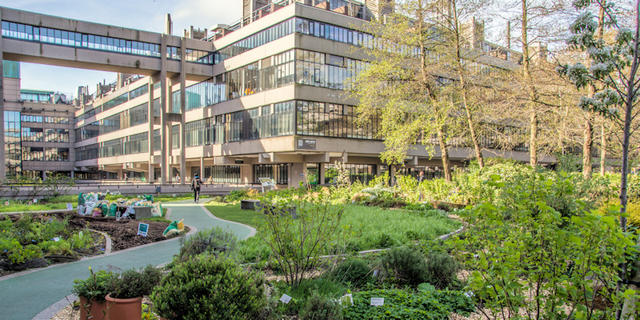Cities could play key role in pollinator conservation
25th January, 2019 - 17:12

Given the pressures that pollinators face on agricultural land, cities could play an important role in conserving pollinators, according to a new study.
The research, involving scientists at the University of Leeds, has revealed that urban gardens and allotments are good for pollinators, and lavender and borage are important garden plants that pollinators use as food sources.
The study, published today in Nature Ecology and Evolution, has assessed all major urban land uses for pollinators. While there have been a few small-scale studies on pollinators in some urban land uses, this is the first-time scientists have considered cities in their entirety.
The research found that residential gardens and allotments (community gardens) are particularly good for pollinators, with lavender, borage, dandelions, thistles, brambles and buttercups important plant species for pollinators in these urban areas.
Study co-author Bill Kunin, Professor of Ecology at the University of Leeds' School of Biology, said: “Pollinators are a vital part of a functioning society, and we need to ensure we are helping them to thrive in our urban environments.
“Here at Leeds we are proud to be providing plenty of green spaces for pollinators, and for people, across campus and more widely across the city. This new research shows that those efforts are extremely important to insect conservation.”
The team, led by the University of Bristol, also designed a new measure of management success, based on community robustness, that considers the stability of whole communities of pollinators, and not just individual species.
Robustness is a measure of how a community responds to species loss; robust communities can survive the disappearance of some species but species loss in fragile communities leads to a domino effect of other extinctions.
The main recommendations from the study are:
- Public greenspaces should be managed so they benefit pollinators. Parks, road verges and other public greenspaces make up around a third of cities but have fewer pollinator visits and resources for pollinators than other land uses. The research shows that increasing the numbers of flowers, for example by mowing less often, can help urban pollinators;
- Gardens make up a quarter to a third of the area of UK cities; better garden management in new developments and existing gardens is likely to benefit pollinator conservation;
- City planners and local councils should increase the number of allotments in towns and cities. Allotments are good for pollinators as well as people and increasing their area even by a small amount could have a large positive effect on pollinators.
Dr Katherine Baldock, NERC Knowledge Exchange Fellow and lead researcher from the University of Bristol, said: “By understanding the impact of each urban land use on pollinators, whether its gardens, allotments, road verges or parks, we can make cities better places for pollinators.”
Jane Memmott, Professor of Ecology at the University of Bristol, who leads the Urban Pollinators Project, added: “This is the first time a new measure of management success that considers the long-term sustainability of pollinator communities, and not just individual species, has been used in a practical conservation context.
“Rather than simply asking about how management affects the number of pollinator species or their abundance, we also ask how potential strategies affect the ability of pollinators to cope with species losses associated with environmental change. A good management intervention leads to more sustainable communities.”
The researchers worked in collaboration with local councils and wildlife trusts during the research, including: Bristol City Council; City of Edinburgh Council; Leeds City Council; Reading Borough Council; Avon Wildlife Trust; Yorkshire Wildlife Trust; Berks, Bucks and Oxon Wildlife Trust and the National Museum of Wales.
Image: University of Leeds sustainable garden, a pollinator haven in the heart of Leeds


